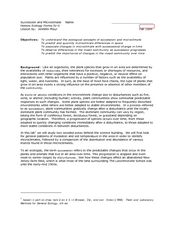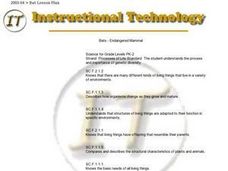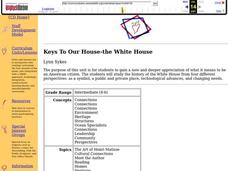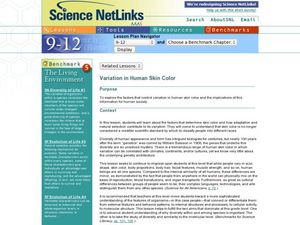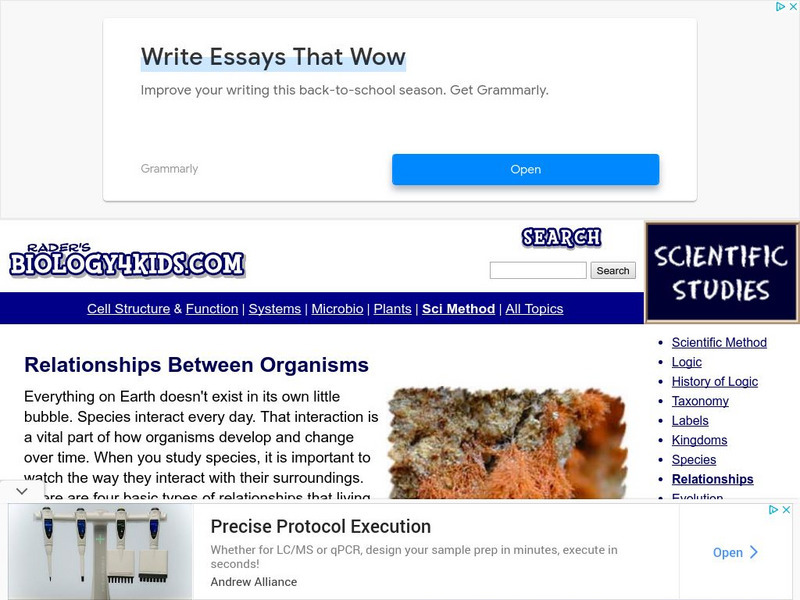Curated OER
Species and Spaces - At Risk at Home
Eleventh graders explore and compare Canadian biomes and investigate species at risk. They describe population growth and eco-regions in terms of climate and geography. They research and create presentations about the natural history and...
Curated OER
Less Than Zero
Students examine negative numbers by extending a vertical number line to include numbers less than zero. After playing a game, students watch a Cyberchase video in which the characters try to solve similar problems.
Curated OER
The IMF In Action: Why Do We Need the IMF?
Students role play as a cell phone salesman who must solve trade issues. They examine how the International Monetary Fund gives assistance to countries with currency difficulties as they make decisions to solve their scenarios.
Curated OER
Struggle for Existence and Population Growth in Aphids
Students examine the population of aphids. They identify adaptations they have made for their environment. They make predictions, test their hypothesis and collect information that either proves or disproves their theory.
Curated OER
Speaking Out For Women's Rights
Students write a children's story in which the characters are encouraged to speak out for the equality of women. They create a character and plot outline that includes details and supporting statements for women's rights. A brief 2-3...
Curated OER
Keys to Our House-The White House
Students explore what it means to be an American citizen. Students investigate the history of the White House from a variety of perspectives: as a symbol, a public and private place, and changing needs.
Curated OER
Pioneers Heading West
Learners research Pacific Northwest Pioneers in order to create a bio-web poster about the author in which they illustrate and write facts about the pioneer. Students then create a book page about their pioneer to add to a class book of...
Curated OER
Magazine Sales Talks
Students role-play to determine the best types of magazines that should be purchased for their media center. They create a sales presentation for a particular magazine in small groups. As they listen to each presentation they evaluate...
Curated OER
Sea Ice Research
Learners study sea ice and its importance in climate and climate change. They discuss sea ice as a presence of a food source for marine animals in the arctic and complete a lab activity. After completing the lab, they watch a video...
Curated OER
Succession and Microclimate
Students compare the population of insects in different microclimates. In this biology lesson, students collect data using probes to tabulate temperature and soil data. They predict how certain parameters change as an area goes through...
Curated OER
Wappo Indians of Napa County
Third graders describe the American Indian nation in their local region long ago and in the recent past in terms of national identities, religious beliefs, customs, and various folklore traditions. They synthesize their findings into a...
Curated OER
Coming to America
Students examine the various cultures of the immigrants who came to America. Using the internet, they research various ethnic and cultural groups within the United States. They identify the reasons why people immigrated to the U.S. and...
Curated OER
Using Scholastic News to Introduce the Net
Third graders log on to the net, type in the address for Scholastic and browse the subjects for the week. They select one area of interest and generate five interesting facts about the article.
Curated OER
Will There Be Ozone Tomorrow
Students collect and analyze real time data. They make comparisons and determinations about the status of ozone in their local area and predict the Ozone level for the next day
Curated OER
The Shortest Distance
Students, working on their GED, examine the steps used to resolve the unknown sides of a right triangle. They express the square root function as an exponential function and derive the distance formula using principles of geometry.
Curated OER
ETHICAL USE OF THE INTERNET
High schoolers investigate the use of the internet and how it should be used by students. The concepts of intellectual property and fair usage are covered. The author of resources is found by them through practice with finding small...
Curated OER
Ecosystems
Students work together to identify the characteristics of their local ecosystem and another one nearby. In groups, they use a Venn Diagram to compare and contrast the two. They use this information to create a collage of both...
Curated OER
Bats - Endangered Mammal
Students complete question sheet on Bats and research information using a list of websites provided by the teacher. They work with peers to complete a scavenger hunt worksheet about bats.
Curated OER
Keys To Our House-the White House
Young scholars explore the history of the White House from four different perspectives: as a symbol, a public and private place, technological advances, and changing needs. They take a virtual tour of the White House and explore its...
Curated OER
The Very Hungry Caterpillar
Second graders watch a video about Eric Carle before listening to his story entitled, The Very Hungry Caterpillar. They notice how the caterpillar eats its way through the days of the week and they examine the life cycle of the...
Curated OER
Sentences And Sequencing
Students practice writing complete sentences and sequencing three or more events. They listen to at least one version of the story read aloud and work cooperatively to put the story events in proper sequence. They access a...
Curated OER
Variation in Human Skin Color
Students classify themselves according to the six skin types. In this biology lesson, students explore the causes of human skin variation. They present their findings in class.
Biology 4 kids
Biology4 Kids: Relationships Between Organisms
Species interact every day. That interaction is a vital part of how organisms develop and change over time. When you study species, it is important to watch the way they interact with their surroundings. There are four basic types of...
Other
Pde Sas: Relationships Among Organisms
In this lesson, young scholars compare various types of relationships among organisms (i.e., biotic interactions). Students will: explain the roles of producers and consumers, and predators and prey in an ecosystem. Explain the levels of...











